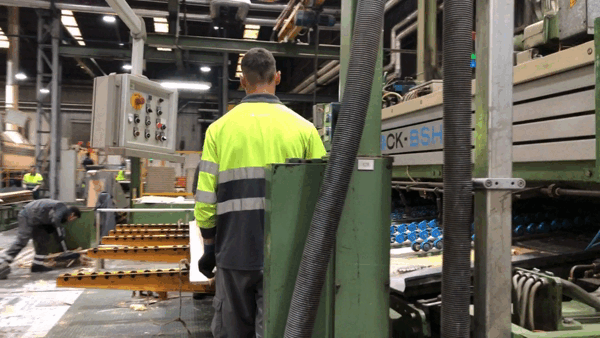Like any wood veneer, Engineered and Dyed Veneers will change in appearance over time. A number of environmental conditions can be responsible for this, but the most damaging is ultra violet light. Grey dyed veneers are the most susceptible to this, especially the lighter shades as well as brightly coloured varieties.
Finishing/lacquering
With UV technology now so commonly used in the drying of lacquer finishes it is important to be aware that this could have an impact on the rate at which the veneers will age and change over time.
There are a number of steps that can be taken to minimise this affect. Providing UV protecting inhibitors inside the lacquer is recommended, but this means that a UV finishing line cannot be used to dry the lacquer. The recommendation of the manufacturers is to use an Acrylic lacquer with UV protectors and to seek expert advice from your supplier.
All wood varnishes will change the colour of veneer after application. It is therefore recommended to always sample and test before using.
Also be aware that Acid Catalyst or pre-Cat coatings should not be used. These can have an immediate and devastating affect and will turn grey veneer green very quickly indeed.
Pressing
Similarly the use of catalysts in the pressing process is not recommended and the manufacturer recommends the use of a PVA glue. However their experience is that with most of the colours Urea glue can be used if the amount of catalyst is kept to an absolute minimum (2% or below). However for best results PVA should always be used with light grey and brightly coloured variants.
As with the pressing of any veneer, the normal common sense approach should be adopted. Over-cooking and pressing at too high a temperature should always be avoided, as in addition to the normal problems this creates it may also lead to colour changes. Similarly the use of inappropriate glues, finishes and substrates should also be avoided. Again we would recommend that a thorough test is made prior to use.
Colour Variation
Engineered and Dyed veneers are manufactured using a sophisticated dying system. The amount of dyes used to create each colour are scientifically calculated to give consistency across different logs and between different production batches.
However no two logs are the same and very small variations will occur. The density of the cells within the wood itself affect their individual ability to absorb the different coloured dyes. The structure and density of these cells differs not only between logs, but also within different parts of the log itself. The dying process seeks to minimise and remove these variations as much as possible, but please remember it is still a natural product and not a tin of paint.
Please follow these recommendations and if any doubt please contact us directly for further guidance. We will fully accept liability in cases of proven manufacturing defect. However due to the many stages and variables in the manufacturing process, we cannot provide a guarantee or accept liability for discolouration of the veneer once it has entered the production process.


